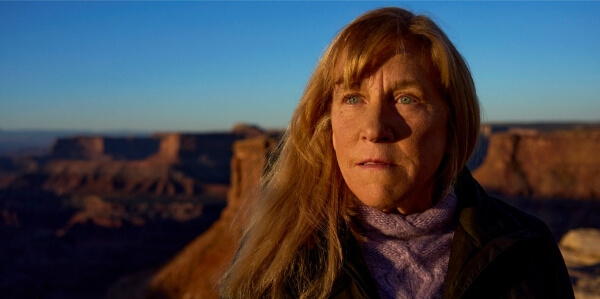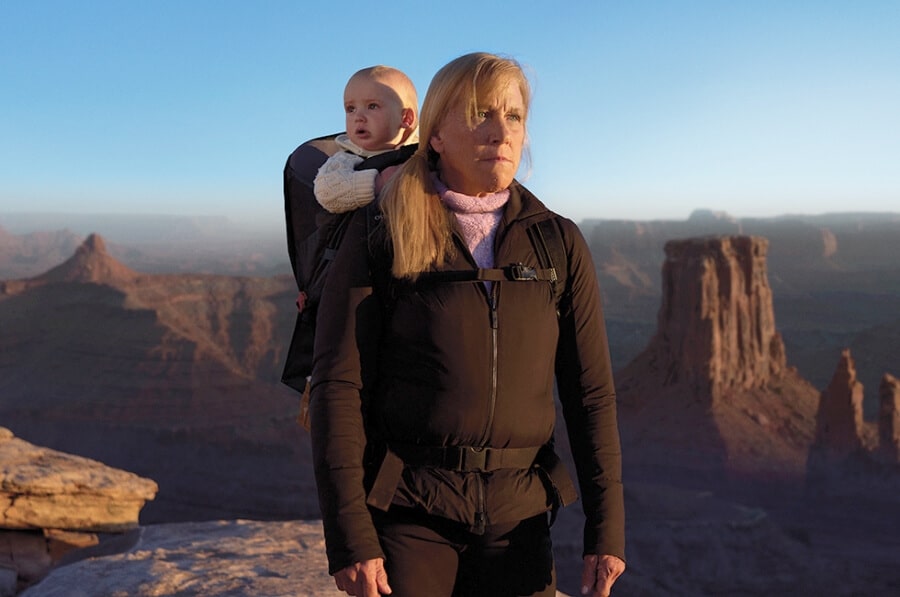Warning: This is not a column about advertising for the treatment of mild-to-moderate anything.
Instead, it’s about a different healthcare animal: hospital advertising, which in the last 20 years or so has grown tremendously.
The difference is that prescription drug ads are legally required to list all possible side effects, however dreadful-to-the point-of-parody they may sound.
Something about this ad for Montefiore-Einstein Hospital promotes so much anxiety in me that I need to vent about it.
Whereas hospital ads, while often touting patient success stories, have no such constraints.
Maybe they should.
Because something about this ad for Montefiore-Einstein Hospital, which has run constantly in the New York area, promotes so much anxiety in me that I need to vent about it.
Open on shooting stars and a dark planet, a dark mountain surface so distant and isolated that it could be the moon. (It’s actually Utah.) A woman sits hunched and bundled in a sweater, alone.
Who is this woman? Why is she so alone? And why did Montefiore-Einstein, an institution in the Bronx, have to go to the mountain in Utah?
Shouldn’t the mountain have come to Montefiore?
There are many mysteries in the spot, including this first bit of on-screen text:
“Not long after losing my child to a brain tumor, I found out I had three brain tumors.”
That sets up a story told in subtitles, a weird disconnect for communicating such a sad, shocking personal narrative.
Not only is our female figure hunched and voiceless, but she is given a tough task for a non-actor—to convey emotion only through her face.
Read More: Can a “Replacement Baby” Heal the Loss of a Child?
Sunshine on the Mountain
The extreme closeups seem to exaggerate her wrinkles; and watching this intimate topography gets awkward. But a soulful female singer’s cover of John Denver’s uber-sentimental “Sunshine on my Shoulders” floods the zone with all the feels. Eventually, the lyric, “Sunshine on my shoulder makes me cry” is edited to match a tear running down her cheek.
The on-screen text abounds with on-the-nose mountain metaphors.
Then the on-screen text abounds with on-the-nose mountain metaphors. “I had a team all around me who could move mountains, so I could rise” it says.
Some form of “I could rise” is repeated, like a musical hook, throughout the spot four times. (And if this phrase sounds familiar, see the famous Maya Angelou poem.)
In Angelou’s version, “I rise” offers an unexpected, poetic feminist anthem. But here it seems to be part of the spot’s subliminal religiosity—Jesus rose, and to see our subject standing alone on the mountaintop, arms outstretched, reminded me of Christ of Monteagudo, the towering Jesus sculpture on that mountain in Spain.
Dark turns to light. A dazzling sun rises. We’re still processing the tense brain tumor news when the subtitle announces, “I’m Barbara Higgens. At 57, I gave birth again. And I knew I could rise”.
Then we see Higgins, obviously recovered from the brain tumors, sitting and smiling in the light, nursing that baby, like the Pieta of Utah.
The Missing Backstory

What? Recovering from death, giving birth to new life—it should be a wholly inspiring story, right?
Certainly, it fits the most classic of tales: A hero struggles with hardship after hardship and then soars.
And in this, post-Roe age especially, we need to support women in whatever reproductive decisions they make. Her body, her choice.
What’s most upsetting is the absence of backstory.
The heroic religiosity of the commercial gives false hope to those who might want to follow in her footsteps.
Thus, all the messy, complex, hot-button medical issues this commercial raises are reduced to a miraculous little tale.
For a hospital ad, that’s downright dangerous and irresponsible, even borderline malpractice.
In reality, Barbara Higgins (now known in the media as “the oldest woman in New Hampshire to give birth”) is a human anomaly. The heroic religiosity of the commercial gives false hope to those who might want to follow in her footsteps, and is no doubt painful to watch for those who’ve tried IVF and weren’t successful.
For starters, what happened with those brain tumors? As a cancer survivor myself, this set off my spidey sense. Did her treatment include chemo? If so, how could Higgins possibly inject herself with the high-powered hormones required to get through IVF and carry a baby?
It turns out that the brain tumors were benign. And also, not-so-incidentally, her mountain-moving team at Montefiore was only indirectly involved with the birth.
That’s right—it’s not about a team moving mountains in obstetrics or oncology. She went to Montefiore for a neurologist..
According to information on the Montefiore website, after her younger daughter’s tragic death, Higgins kept dreaming of another baby, and was determined to go through the process even though most IVF treatment centers would not accept her.
But her first hurdle was that she’d been taking pain meds for trigeminal neuralgia (nerve pain in her face) for many years, and knew she’d have to quit to carry a pregnancy. She did go off the pills. But after she did, the pain was so overwhelming that she ended up having an MRI, which showed tumors in her brain.
No word on whose egg it was.
So that’s where Montefiore came in. Higgins picked a neuro-surgeon there, a four-and-a-half hour drive from her home, a choice that would be impossible for most people with standard insurance. Whether the procedure was out-of-pocket never comes up.
Most important, the surgery successfully removed the tumors and also took care of the neuralgia.
The IVF part—and baby Jack was the result of her second try—was all done in Boston. Also unmentioned is that the birth was induced early because Higgins had developed preeclampsia, and the baby was small.
No word on whose egg it was.
By the way, in real life, Higgins, a world-class athlete, is hardly an isolated figure on some moon-top, voiceless. She has a husband and 20-year old daughter.
There’s a video on the Montefiore website showing Higgins and her family, feet on the ground, at home in New Hampshire, where they tell their own stories. It feels authentic. It connects. It’s real-life. They should have run a cut-down version of this video for the TV commercial.
Instead, we get this elaborate, high-budget drama that is so blank and unclear on actual facts and medical details that we fill it up with our own emotions and biases.
That’s not sunshine. It’s darkness, a diagnosis for advertising malpractice.
Read More: Instead of an Empty Nest, She Chose to Have 2 More Babies





















0 Comments